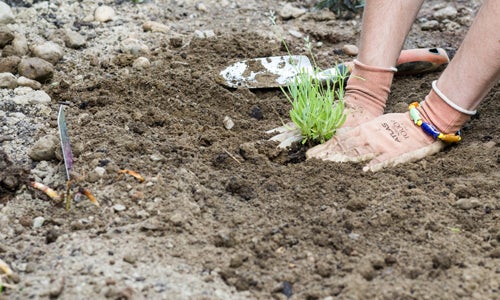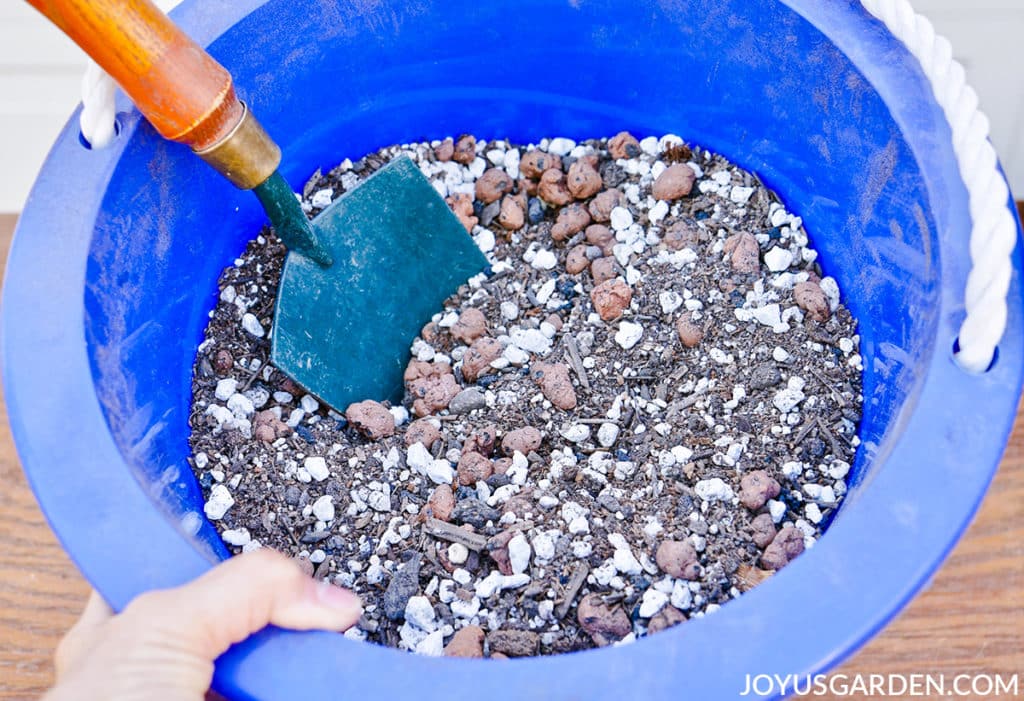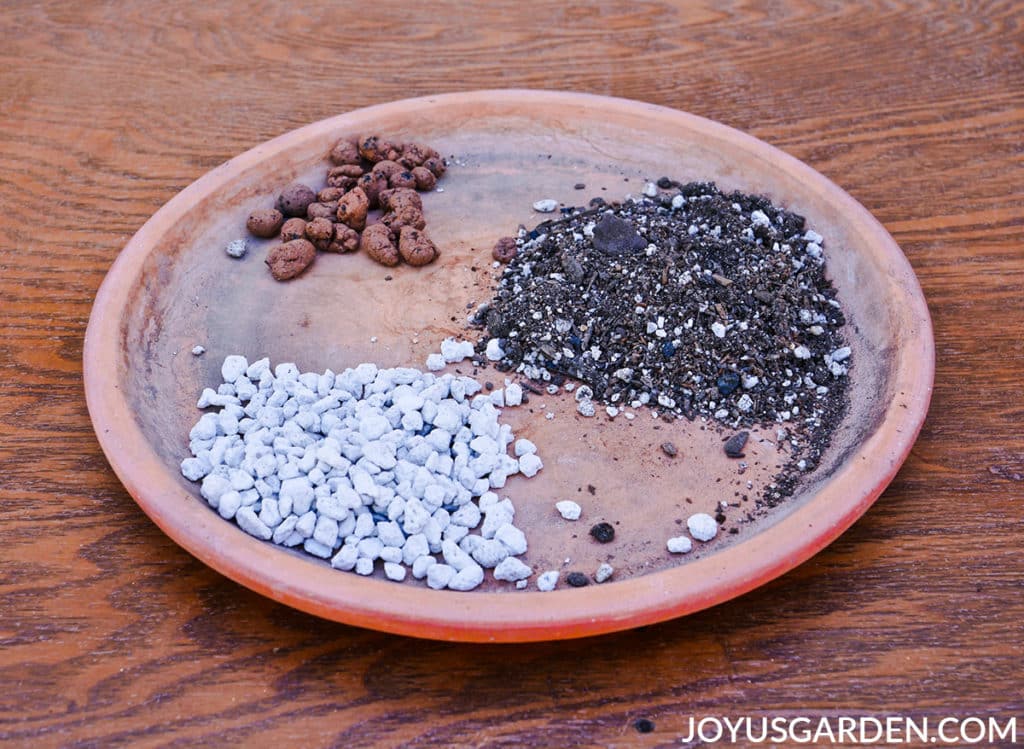Lavenders are indigenous to the Mediterranean region, so you must recreate that region’s soil characteristics in order to properly cultivate lavenders.
Sandy, well-draining soil with low to moderate fertility is ideal for lavender cultivation. Although lavender may thrive in slightly acidic soils, it prefers to grow in neutral or slightly alkaline soils. Natural sandy or chalk soils are excellent for growing lavender.
In order to cultivate lavenders that flower well in your garden, this article will go over exactly what soil conditions lavenders enjoy and how you can mimic these circumstances.
This recommendation is applicable to all lavender cultivars and their hybrids.
Table of Contents
Lavenders Need Good drainage
When cultivating lavender, the most crucial component is soil with sufficient drainage.
Lavenders are indigenous to the Mediterranean region, where plants flourish in full sunlight, sparse precipitation, and sandy soils that drain extremely fast.
Although you don’t have need to live in a Mediterranean climate to produce lavenders, you do need to recreate the dry, sandy soil environment for them to thrive and bloom.
If you don’t amend your soil before planting lavender, lavender in gardens with clay or other cold, wet, slow-draining soil will be subject to root rot and won’t survive.
You have three options for cultivating lavenders if your garden has a sluggish drainage system or a tendency to retain a lot of water.
- Lavender can be grown in raised beds. By placing lavender plants in a raised bed, you have perfect control over the type of soil you add to the bed and the plants will be kept out of any naturally wet low lying regions.
- cultivate lavender in pots. As long as the pot’s base has adequate-sized drainage holes, containers give dryer conditions and excellent drainage, which lavenders thrive in. Of course, you may amend the soil with lots of sand or grit to further provide the ideal soil drainage conditions.
- In your garden, add an even amount of sand (or grit) and dirt to the soil before planting lavenders. As long as you check that the soil drains quickly after watering it, you don’t need to be particularly accurate while planting the lavender. You will need to add more sand and grit to the mixture and try again if the water seeps away gradually.
You will need to supplement the soil with course sand or grit in order to mimic their natural growing conditions unless you are fortunate enough to live in one of the Mediterranean countries, such as Spain, France, or Italy.
Grit and coarse builders sand are also suggested as alternatives to fine sand. These components will give the soil the right structure and air spaces so that water can quickly drain away from the roots of the lavender.
Additionally poor in nutrients are sand and grit, which is perfect for your lavender. In addition to encouraging leaf growth and fewer flowers, high-nutrient soils are also likely to retain too much water, which will be detrimental to the growth of lavender.
Rich soils with a lot of organic matter can store a lot of water, which can damage the lavender’s roots and make the environment too humid for the arid-loving plant.
However, if you have rich soils that drain slowly, you will need to use a 50:50 sand or grit to compost mix for optimal results. If your soil is already reasonably fine, adding one third sand or grit to two thirds compost will assure the correct level of drainage.
Before planting the lavender, always perform a test by wetting the planting area and gauging how quickly the water drains away. The optimum soil condition is one in which water does not accumulate and the soil drains well. If drainage is poor, add additional grit and try once more. There will need to be some trial and error because this is not an exact science.
The Correct Soil pH for Lavenders
Because chalk allows for adequate drainage and has a tendency to be slightly alkaline, lavender grows particularly well in gardens with chalk soils.
If you are unsure of the pH of your soil, you can easily test it using a cheap kit from Amazon. You don’t need to have a deep understanding of science to test your soil’s pH, and the time and money you ultimately save by knowing which plants thrive in your garden soil can be substantial.
The majority of garden soils are neutral, but if you do have acidic soils, you can add wood ash or garden lime to them to boost the pH level, making the soil suitable for growing lavender and other plants.
If you are planting lavenders in pots or filling raised beds, there is no need to worry about the pH levels because multipurpose compost with the additions of grit and sand will be excellent for growing lavenders.
Soil Nutrients for Lavenders (What you Need to Know)
Lavenders prefer low- to medium-fertility soils in terms of soil nutrients. There will be considerably fewer flowers if the soil is overly nutrient-rich because it will encourage the lavender’s foliage to flourish.
Whereas most plants would struggle, lavenders flourish, and they really reward a gardener who can give them the seemingly severe circumstances they need.
The only additions required for lavender are sand and grit, which will offer the structure and low nutrient content that the plant requires. A normal multipurpose compost will work just well for lavender.
I once came across suggestions regarding fertilizing lavender plants, which neither I nor the RHS would advise.
Fertilizer will simply encourage excessive leaf growth with few, if any, blooms, and a high concentration of fertilizer can destroy the plant’s roots. Lavenders require low to medium fertility in their soils.
Since I have been growing lavenders in pots and beds that emit a wonderful aroma and consistently yield a profusion of flowers, I myself have never used fertilizer because lavenders like nutrient-poor soils.
The best chance for lavenders to produce lovely, fragrant flowers is to give them compost and sand rather than fertilizer, as fertilizer simply works against the conditions that lavenders need to grow.
Growing Lavenders in Different Soil Types
This is presuming that the lavender plants will get full sun where you plan to put them (preferably more the 6 hours of direct sun per day).
Particularly clay soils are not only unfavorable for structure but also for high fertility. Digging out the planting area and replacing it with soil that contains at least 50% grit and 50% multipurpose compost are essential when dealing with clay.
In comparison to only sand, grit is more able to create air pockets in the soil and retain its structure in heavy soils. To prevent water from just pooling underneath the lavender and rotting the roots, you should constantly cover the bottom of the planting hole with 2 inches of grit.
Again its crucial that you test the soil’s drainage before planting by thoroughly wetting the proposed planting area and making sure it drains fast and correcting by adding additional grit if necessary.
If you want to prolong the life of a lavender hedge, you need either propagate lavenders because they are relatively short-lived plants and frequently die after 4 years.
Conclusion
Key conclusions:
- The soil needs to resemble the Mediterranean soils where lavenders are native.
- The ideal conditions are sandy soils with low to medium fertility, quick drainage, and a pH of either neutral or slightly alkaline.
- Raised beds, containers, and soils improved with sand or grit and multifunctional compost all work well with lavender.
- Lavenders don’t need fertilizer because it will encourage more foliage growth and less flowers. Lavenders do not benefit from fertilizers because they require soils with low to moderate nutrient levels.
FAQ
Does lavender like wet or dry soil?
Lavender thrives in arid environments, so you won’t need to water it until the top 2 inches of soil are parched. Regularly feeding your plants with water-soluble plant food can encourage brilliant blooms. When stems are big enough to utilize, harvest them. Don’t take more than a third of the plant at once.
Does lavender grow in wet soil?
Lavender requires well-draining soil because it cannot tolerate damp or standing water. By adding pea gravel or landscape sand to the planting site, you can improve soil drainage. Choose cultivars like the French (L. dentata) and Spanish (L. stoechas) that are most suited for areas with high temperatures and humidity.
Does lavender like dry soil?
Lavender thrives in arid environments, so you won’t need to water it until the top 2 inches of soil are parched. Regularly feeding your plants with water-soluble plant food can encourage brilliant blooms. When stems are big enough to utilize, harvest them. Don’t take more than a third of the plant at once.
Do lavender plants need special soil?
Lavender should be grown on soil that is well-drained, slightly alkaline, and between pH 6.7 and 7.3. Before planting, you can add builder’s sand to the soil to improve drainage. This is important because lavender won’t tolerate a lot of soil wetness or humidity.
Can I use potting soil for lavender?
Planting soil for lavender No matter how big or tiny, lavender plants need a soil mixture with some grit and very good drainage. The soil does not need to be perfect, but it should be alkaline, somewhat fertile, and properly aerated. Pumice, clay pebbles, and potting soil are the ingredients.



